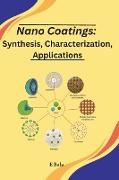Nano coatings: Synthesis, Characterization, Applications
BücherAngebote / Angebote:
Nanoceramic coatings have emerged as a promising solution to enhance the surface properties of various materials. These coatings have unique physical and chemical properties that make them an ideal choice for various applications such as protective coatings, anti-corrosive coatings, and biocompatible coatings. The synthesis of nanoceramic coatings involves various techniques such as chemical vapor deposition (CVD), physical vapor deposition (PVD), and sol-gel methods. CVD is a technique used to deposit thin films of ceramics on the surface of a substrate by a chemical reaction between the precursor gas and the substrate. PVD, on the other hand, involves the deposition of a thin film of ceramic on the surface of the substrate by the process of physical vaporization. Sol-gel method is a simple and low-cost technique that involves the formation of a ceramic coating from a liquid precursor. Characterization of nanoceramic coatings is important to determine their structural, morphological, and surface properties. Various analytical techniques such as X-ray diffraction (XRD), scanning electron microscopy (SEM), transmission electron microscopy (TEM), and atomic force microscopy (AFM) are used to characterize these coatings. XRD is used to determine the crystal structure and phase composition of the coatings. SEM and TEM provide information about the morphology and microstructure of the coatings. AFM is used to determine the surface topography and roughness of the coatings. The applications of nanoceramic coatings are diverse and widespread. One of the most important applications of these coatings is in the field of protective coatings. Nanoceramic coatings can enhance the mechanical strength, wear resistance, and scratch resistance of various materials. These coatings are also used as anti-corrosive coatings to protect the surface of metals from corrosion. Another important application of nanoceramic coatings is in the field of biocompatible coatings. These coatings are used in medical implants to improve their biocompatibility and reduce the risk of rejection by the human body. Nanoceramic coatings are also used in the field of energy storage and conversion. These coatings can enhance the performance and stability of batteries and fuel cells. They are also used in the production of solar cells to improve their efficiency and durability. Nanoceramic coatings are also used in the field of catalysis. These coatings can enhance the catalytic activity and selectivity of catalysts, thereby improving the efficiency of various chemical reactions. In conclusion, nanoceramic coatings have revolutionized the field of surface engineering. The synthesis, characterization, and applications of these coatings have been extensively studied and have shown great potential in various fields. With continued research and development, nanoceramic coatings will undoubtedly continue to play a critical role in the development of new technologies and the improvement of existing ones.
Folgt in ca. 15 Arbeitstagen


